- Administrator
- Albums and Singles
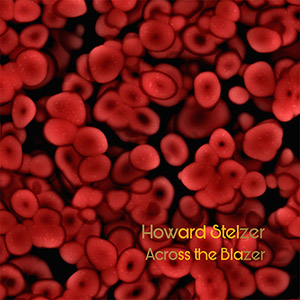 The latest work from New England's legendary tape manipulator (presented on CD, in a bit of irony) is another work in a series of releases that reflects his more meditative, contemplative side. Like the somewhat recent Dawn Songs tape, Across the Blazer features Stelzer using his array of tape machines to construct vast expanses of sound, less about bent motors or mangled tape, but more the enveloping warmth of analog imperfection. The end product is surprisingly inviting and relaxing, words that are rarely apt descriptors of something generally labeled as "noise".
The latest work from New England's legendary tape manipulator (presented on CD, in a bit of irony) is another work in a series of releases that reflects his more meditative, contemplative side. Like the somewhat recent Dawn Songs tape, Across the Blazer features Stelzer using his array of tape machines to construct vast expanses of sound, less about bent motors or mangled tape, but more the enveloping warmth of analog imperfection. The end product is surprisingly inviting and relaxing, words that are rarely apt descriptors of something generally labeled as "noise".
Across the Blazer is two lengthy pieces Stelzer composed over a two year period, with some live source material carefully blended in, but where the studio treatments end and the live improvisations begin are anything but distinct."Selective Memory (You Never Know Absolutely Quite Where You Are)" has Stelzer leading off with a deep, far off rumble akin to the vibrations of a tape deck motor, but the sound is eventually shaped into that of a murky, deep sea-like bubbling.After allowing the piece to develop, Stelzer patiently introduced passages of pleasant, soothing white noise like layers.Other than the densely piled, telltale hiss of analog tape, the material he is working from is largely blurry and intentionally out of focus.
Ostensibly it is a noise composition, but the final product is anything but jarring or unpleasant to the ears.Instead it is a consistent, expansive blanket of sound, with the extreme frequencies rolled off to smooth out any sharp or rough patches.Eventually the light, sustained noise is faded back out as delicately as it was brought in, leaving only the low-end rumble that was there from the onset.
For the nearly 28 minute "Across the Blazer," the live sourcing is a bit more overt from incidental location recordings that open the piece, although only briefly.Like "Selective Memory," Stelzer focuses less on collages, edits, or jolting sounds and instead continues the pleasant, enveloping sounds culled from tape.Compared to "Selective Memory," the material he works from here is more tonal in nature, almost sounding like an overly saturated, extremely worn cassette of a symphonic recording with only the barest essentials of tone remaining.
Again, hissing midrange noise becomes the focus, but also again in an ear pleasing, placid context.The unrelenting approach is not far removed from the harsh noise wall subgenre, but with all of the harshness excised.Instead it is like the sonic equivalent of gradually being engulfed by a gigantic wave, but instead of frigid liquid, it is like warm bathwater and happening in slow motion.Throughout the composition the mix continues to build and pile up, but stays firmly rooted in that gentle, beautiful context before lightly fading away into shimmering space.I have yet to find a work from Howard Stelzer that I have not vigorously enjoyed, and Across the Blazer is no exception to that pattern of releases.Of course I am still looking forward to hearing more of his dynamic, collage like works, but this softer, gentler side to his art is just as amazing.
Read More
- Administrator
- Albums and Singles
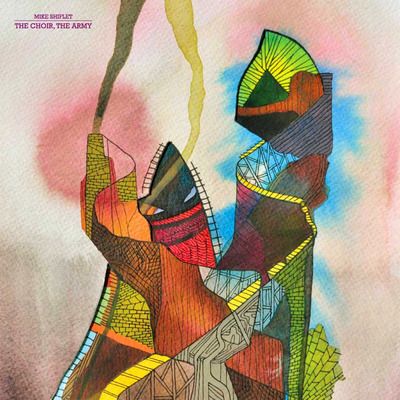
As one of the world's foremost sound-artists, Mike Shiflet has released music on labels as diverse as Type, Homophoni, Digitalis Limited and 905 Tapes. It gives Under The Spire great pleasure to welcome him into our fold for his outstanding new LP The Choir, The Army.
It can be hard to keep track of Mike Shiflet. Already on his quadrillionth release of the year – and his fourth in the space of a couple of weeks – the prolific drone genius touches down at Under The Spire to give us The Choir, The Army. How he maintains such extraordinarily high quality is beyond us, but we're happy to announce The Choir, The Army as being one of his finest outings yet. From the queasy Golem gurgles that open '1917' to the spectral drift of 'Inching' and the squealing noise terror of 'Attrition', Shiflet covers all bases and blends them to form a coherent journey through a sound world that soothes as often as it startles. All the while, beneath and behind, subtle pulses, static crackles and clean, clear washes of pure atmosphere create swarming rivulets that crash, calm and reach a flooded zenith with 'Yonder', a broke-down 'n' blue violin paean to distant memories drowned in glorious liquid sound.
This limited edition LP is restricted to just 250 copies on purple vinyl. The first 18 orders will include a free CD containing exclusive material. Pre-order here *Ships mid-late October*
Read More
- Administrator
- Albums and Singles
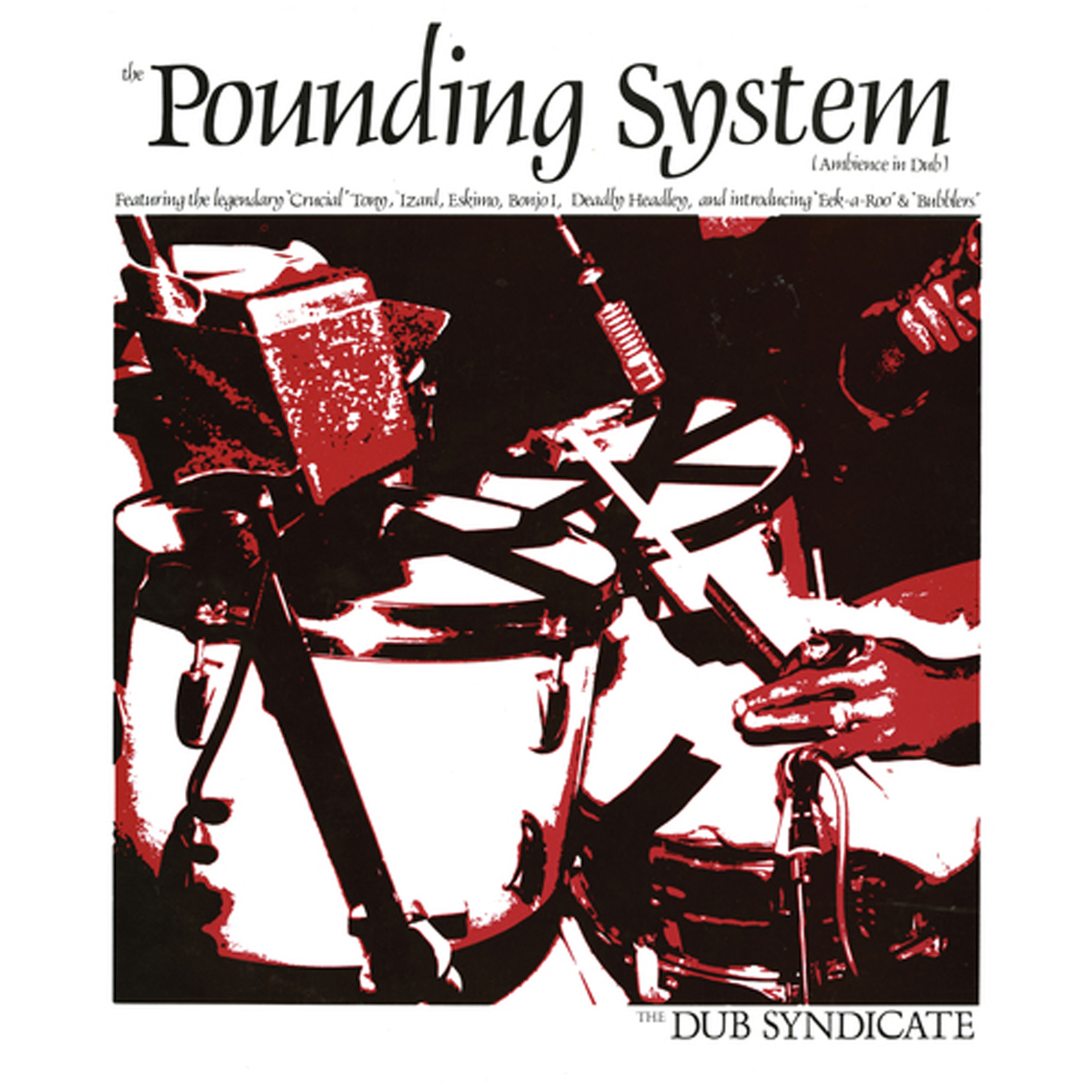 Newly reissued, this 1982 debut from Adrian Sherwood’s eclectic dub project is an ambitious and occasionally perplexing affair. The album’s subtitle, "Ambiance in Dub," goes a long way towards explaining the unusual and embryonic aesthetic, as does the fact that it was recorded by a revolving cast of guest musicians during a fortuitous window at a well-equipped studio: these are very simple and stripped-down bass-driven songs that leave plenty of room for each individual element to breathe. That is ideal for Sherwood’s experiments with reverb and mic placement, which seem to be The Pounding System's raison d’être: this is very much a playground for Sherwood’s production and recording wizardry. I suppose that could be said of all dub, but it feels like Sherwood is animating skeletons rather than deconstructing complete, fully formed songs. To my ears, Dub Syndicate's later, more layered work holds up much better than the semi-traditional dub reggae found here, but The Pounding System is a pleasant (if uneven) teaser for the more substantial work on the horizon.
Newly reissued, this 1982 debut from Adrian Sherwood’s eclectic dub project is an ambitious and occasionally perplexing affair. The album’s subtitle, "Ambiance in Dub," goes a long way towards explaining the unusual and embryonic aesthetic, as does the fact that it was recorded by a revolving cast of guest musicians during a fortuitous window at a well-equipped studio: these are very simple and stripped-down bass-driven songs that leave plenty of room for each individual element to breathe. That is ideal for Sherwood’s experiments with reverb and mic placement, which seem to be The Pounding System's raison d’être: this is very much a playground for Sherwood’s production and recording wizardry. I suppose that could be said of all dub, but it feels like Sherwood is animating skeletons rather than deconstructing complete, fully formed songs. To my ears, Dub Syndicate's later, more layered work holds up much better than the semi-traditional dub reggae found here, but The Pounding System is a pleasant (if uneven) teaser for the more substantial work on the horizon.
Sherwood’s ensemble for this early incarnation changes significantly from song to song and is a bit bewildering and incestuous, as almost everyone has some kind of alias and some degree of prior association with On-U sound.The core of the group is essentially Creation Rebel though (Sherwood did much of his early production work with them).Their guitarist, Crucial Tony, proves to be especially worthy of his name, as his bass lines form the bedrock of much of this album.In fact, roughly half of these pieces seem like Tony vamping on a bass riff along with either his Creation Rebel bandmate Eskimo or Divided Roots' Donald "Eek-a-Roo" Campbell.Even when Lizard Logan handles the bass duties, Crucial Tony is often still credited as a songwriter–he has his fingers in everything.Notably, Eskimo is a bit of a Dub Syndicate fixture as well, returning on some later records, but The Pounding System is the only album recorded before Style Scott claimed the stool and became a central protagonist in everything to follow.In any case, The Pounding System definitely suffers a bit from the hyper-limited "rhythm section only" palette, as "Humorless Journalist Works to Rules" is essentially just a one-riff bass and drum jam punctuated by some occasional wild production flourishes.Even several of the more fleshed-out songs are only embellished by a couple of major chords, which leaves me thirsty for literally anything else to turn up. Some vocals would have been especially welcome, but most of the excitement and variety comes from either African Head Charge's clattering percussion or a couple of saxophone cameos.In particular, Mr. Flesh's ghostly, reverb-swathed melody hook on "Pounding Systems" makes that piece a stand-out, but Jamaican session legend Deadly Headley makes "Don't Care About Space Invaders Machines" a highlight as well with his charmingly breezy melodies.
Unfortunately, the drums on this record are major sticking point for me, as booming rock drums are not ideal for maintaining dub's smoky, elegantly blurred spell.I doubt the drummers themselves were to blame though, as this was very much Sherwood’s show and I have heard Eskimo play more fluidly elsewhere.Regardless of who is behind the kit for The Pounding System, the drums almost exclusively stick to a plodding mid-paced boom-bap, which admittedly leaves a lot of space between kick drum and snare hits for dubby cymbal flourishes and clattering fills.It also leaves a lot of room for every single snap or thump to reverberate, which Sherwood seemed quite fond of during this period: big, thundering drums with a long decay.That certainly allows Sherwood plenty of room to work his magic, but it also results in a somewhat leaden feel that feels completely antithetical to the heady grooves of classic dub.That is the fundamental tragedy of this release: Sherwood is trying his damnedest to put on a dazzling showcase, yet the album is kind of stuck in neutral because there is not a hell of a lot happening melodically, harmonically, or rhythmically beyond the barest bones of reggae.There is just not a lot of character here, as many of these songs feel like hurriedly composed workmanlike facsimiles of quality reggae rather than the real thing.Whether that was due to the circumstance or whether Sherwood simply got much better at this later is hard to say.What is clear is that the best dub albums are almost always the ones where a great producer takes on great songs or a great band, not the ones where a producer has carte blanche to indulge his every whim from the ground up.
That said, there are still a couple of head-turning moments to be found on the album, most notably "Crucial Tony Tries to Rescue the Space Invaders," which boasts both the most fluid, absorbing bass groove on the album and an extremely cool crescendo of reverberating shudders and squelches.It is not radically different from some other pieces, but the execution is on an entirely different plane, as Sherwood keeps things at a perfect simmer and periodically lets the drums drop put altogether.It is definitely Sherwood’s zenith for deftly juggling dynamics while maintaining both a healthy bit of unpredictability and forward motion (for this record, at least).Curiously, Dub Syndicate seem to be at their best only when directly paying homage to Space Invaders (and/or needling Scientist), as "Don't Care About Space Invaders Machines" is the album’s most overly melodic and vibrantly percussive piece.Also, Sherwood himself contributes some nice space-y electronics.  As for the rest of the album, a lot of it sounds like some members of a professional reggae band idly testing some new ideas in a practice space while they wait for the rest of the band to show up (the good songs sound like what happens when they finally do).Perplexingly, a few of these pieces are actually cannibalized classics from the On-U Sound catalog (Bim Sherman’s "Across The Red Sea" and Prince Far I’s "Bedward the Flying Preacher"), but they go through a kind of reverse alchemy and emerge as less compellings shadows of their former selves.Too much was carved away, frankly, and Sherwood’s studio pyrotechnics could not do all of the heavy lifting on its own–his instincts had not quite caught up with his technique at this stage of the game.Or maybe they had, as Sherwood produced those better versions too–perhaps this project was initially a flight of pure indulgence that later grew into something more.Either way, there is a decent amount to like here, but The Pounding System is also evidence that Adrian Sherwood did not instantly spring into being as a fully formed cultural visionary.
 
Read More
- Administrator
- Albums and Singles
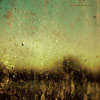 Hampson released the exceptional Répercussions earlier this year, his first full length since 2008's Vectors. Now he has followed that up with two more albums, released simultaneously but presented separately. Even though he has become suddenly prolific, both albums are of the utmost quality, and have a distinctly different approach to sound between them.  And yes, fans of Loop and Main, there are guitars.
Hampson released the exceptional Répercussions earlier this year, his first full length since 2008's Vectors. Now he has followed that up with two more albums, released simultaneously but presented separately. Even though he has become suddenly prolific, both albums are of the utmost quality, and have a distinctly different approach to sound between them.  And yes, fans of Loop and Main, there are guitars.
Signaux is more in league with Hampson's acoustimatic work on Répercussions and Vectors:a microcosmic world of miniature sounds and alien melodies that flow splendidly into one another.Suspended Cadences, however, is more of a throwback to some of his earlier Main material, no doubt because of his reintroduction of guitars to that album.It is not a nostalgia trip though, it just sounds like the natural evolution of that sound.
Signaux is constructed solely from analog electronic sources and only utilizing computers as a point of recording and editing, so the sounds generated become a complete mystery, sounding like nothing and no one else.Even though the album is split into two side-long pieces, anyone familiar with Hampson's work knows that he rarely stands still, and these two are constantly evolving and changing, mixing dense complex passages with more airy ones..
"Signaux 1" began life as an eight channel installation work, mixed down into a standard stereo mix.Digital noises that lie somewhere between chirping crickets and skipping CDs blend with heart monitor beeps in the opening minutes, along with his trademark oddly filtered, tactile textures.The piece emphasizes texture and microscopic noises, occasionally with oddly resonating, elongated tones.It is the antithesis of drone, in that it never seems to stop moving like a living, breathing organism.
On the B side, "Signaux 2," composed just for this album, follows a similar template, although it does emphasize the tones a bit more than the textures, though both are equally represented.Rather than just tones, there is a rhythmic, occasionally percussive undercurrent in the piece and quite different from the one that preceded it, but it very much feels like the second half of the same work.
 
sample:
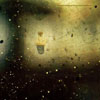
Also a two side-long track affair, Suspended Cadences is Hampson's long-awaited return to guitar, in addition to analog electronics.The use of guitar is immediately noticeable on "Suspended Cadences (Three)" (parts one and two were only performed live), although in execution it has a different quality entirely.Long, sprawling tones and a looming hum bear all of the hallmarks of the instrument, but reshaped and molded into something distinctly unique.Less about texture and more about tones, there is an alternating between shimmering, beautiful passages and ugly, distorted outbursts.
"Suspended Cadences (Four)" leans more into a minimalist drone, with subtly shifting guitar tracks layered together, slowly moving and evolving throughout.There is a fair amount of processed and effected electronic ambience to be had, but the focus is definitely on the subtle hums of a guitar amplifier, or the resonating buzz of feedback.
Releasing these two albums independently from one another makes a lot of sense, given that they are significantly different from one another in content and execution.The more electronic-focused Signaux may exhibit more variation and change in its approach, but the sonic character of Robert Hampson's guitar mangling never disappoints.Neither one is better than the other, largely because they are so different, but their differences also complement each other beautifully.
samples:
 
Read More
- Administrator
- Albums and Singles
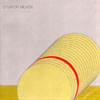 As the ambitious (and essential) reissue program by Die Stadt approaches conclusion, Tietchens' final release for Esplendor Geometrico's label, and last release of the 1980s, gets the expanded treatment. Heavily steeped in rhythmic loops and metallic reverb, it clearly shows the mark of his industrial period, but also of the abstract direction to come.
As the ambitious (and essential) reissue program by Die Stadt approaches conclusion, Tietchens' final release for Esplendor Geometrico's label, and last release of the 1980s, gets the expanded treatment. Heavily steeped in rhythmic loops and metallic reverb, it clearly shows the mark of his industrial period, but also of the abstract direction to come.
Pieces such as "Stimmen der Vernunft" and "Tollerort" exemplify this album:clattering, slightly cut-up rhythmic loops awash in reverb pounding atop one another, becoming more and more dissonant as they move on but never abandoning their underlying rhythmic structure."Aufs Maul" does this perhaps the best:interlocking loops and polyrhyhmic variations add an extra level of complexity and start to take on a Neubauten-like quality, but never sounding like anything but Tietchens.
Others deemphasize the percussion in lieu of rhythmic digital synth loops:"Aufstand der Massen" has the same rhythm usage as others, but focuses more on the disjointed and erratic synthesizer patterns, with the percussive crashes building to dramatic crescendos and then retreating once again."Mammi Money" mixes the two worlds, with a joint rhythm and synth loop that slowly comes apart as if the two pieces are going slowly out of sync before brilliantly becoming completely fragmented.
Amidst these longer tracks are a few shorter, more skeletal ones that lean even more into experimentalism, and the pure sound art Tietchens would soon embrace.The wet, echoy loops of "Pflegkammer Intern" sound as if it could be a field recording within a factory, while "Schacht Hera" loops dense, low-end heavy piano passages in a dramatic fashion.The twinkly synth blips and beeps of "Konvoy" actually recalls his earlier, synth pop Sky Records material, albeit with a darker and more modernized hue.
The four bonus tracks are from the same era, and unsurprisingly sound as if they could have been lifted off of the original album to begin with.Both "Krill-Schatten" and "Heimstatt des Betons" fit the mood, but largely ignore the rhythms in favor of more abstract textures, the latter even sounding more like tape loops of stringed instruments than the synthesized bleakness that preceded it."An Alle" is classic Tietchens of the era and a nod to the earliest industrial music:taut, spring reverberated crashes, taped voices, and a sense of dark ambient menace throughout.
While Asmus Tietchens has since moved into less rhythmic, more abstracted worlds of sound in his more contemporaneous works, I have always had a soft spot for the treated rhythms and looped samples of this era, which often resembles a distillation of the best elements of 1980s industrial.No vocals, no melodies, just heavy, inhuman rhythms and dark dissonance.Like the previous Die Stadt reissues, Stupor Mundi is beautifully presented and remastered perfectly.I have enjoyed every part of this series I have heard thus far, but I may lean more towards this one as a favorite.
samples:
 
Read More
- Administrator
- Albums and Singles
 This EP is a taste of what to expect on their new album devoted to the theme of telepathy and psychic phenomena. I do not know whether Matmos actually buys the parapsychological theories that inspire the music but, like any of their conceptual experiments, they use the source material to think about their music in new ways. Some of it sounds undeniably like Matmos, but, as usual, they push themselves into novel situations with a long, complex vocal work which lines up with the peculiar subject matter perfectly.
This EP is a taste of what to expect on their new album devoted to the theme of telepathy and psychic phenomena. I do not know whether Matmos actually buys the parapsychological theories that inspire the music but, like any of their conceptual experiments, they use the source material to think about their music in new ways. Some of it sounds undeniably like Matmos, but, as usual, they push themselves into novel situations with a long, complex vocal work which lines up with the peculiar subject matter perfectly.
In work for several years now, elements of these songs have been incorporated into Matmos’ live sets in various different guises though only one of the pieces appears here as it did during live shows. The first two pieces are classic body-movers by the duo; "Very Large Green Triangles" takes its cue from the piece Matmos used to open their shows with but instead of being an atmospheric work, here it belts along with a fantastic rhythm which is bound to raise some spirits. Similarly, "You (Rrose Mix)" continues the musical theme with its deep, techno pulses. Hints of Coil’s Love’s Secret Domain peep through the cracks but overall this seems custom made to transform any regular horizontal surface into a dance floor.
At recent shows, the group have been using choirs of ordinary audience members in recreating the uncanny conditions of ganzfeld experiments. I had the luck to be involved in one such choir at their last performance here in Dublin. Each participant donned a pair of ganzfeld goggles (essentially small pieces of plastic which block out all visual stimuli, see here for an idea of the original experiments) and a pair of headphones. We were given an mp3 player with a track unique to each person: different speeches in strange, monotonous voices which we were supposed to repeat in the same manner as if receiving these voices from the ether.
The same method is used during "Just Waves" to create one of Matmos’ oddest tracks (and one that is completely at odds with the dance-orientated pieces that precede it on this EP). It sounds like a stream of consciousness as much as the reading of telepathic images (though what would telepathy be but the merging of two such streams?). While parapsychology as a field is something I have no time (it is kind of hard to be a neuroscientist and believe in the likes of telepathy) but I do love this aesthetic and the final results of Matmos’ musical experiment. The layers of voices (including Dan Deacon and Clodagh Simonds) form a weird confluence of sounds ranging from snippets of phrases to odd drones and hums. A keyboard fills in the background layer but it is those voices that steal the show.
To think this is just a foresight of what is to come on the new album, I eagerly anticipate where they go with it all.
 
Read More
 This EP is a taste of what to expect on their new album devoted to the theme of telepathy and psychic phenomena. I do not know whether Matmos actually buys the parapsychological theories that inspire the music but, like any of their conceptual experiments, they use the source material to think about their music in new ways. Some of it sounds undeniably like Matmos, but, as usual, they push themselves into novel situations with a long, complex vocal work which lines up with the peculiar subject matter perfectly.
This EP is a taste of what to expect on their new album devoted to the theme of telepathy and psychic phenomena. I do not know whether Matmos actually buys the parapsychological theories that inspire the music but, like any of their conceptual experiments, they use the source material to think about their music in new ways. Some of it sounds undeniably like Matmos, but, as usual, they push themselves into novel situations with a long, complex vocal work which lines up with the peculiar subject matter perfectly.
 This EP is a taste of what to expect on their new album devoted to the theme of telepathy and psychic phenomena. I do not know whether Matmos actually buys the parapsychological theories that inspire the music but, like any of their conceptual experiments, they use the source material to think about their music in new ways. Some of it sounds undeniably like Matmos but as usual they push themselves into novel situations with a long, complex vocal work which lines up with the peculiar subject matter perfectly.
This EP is a taste of what to expect on their new album devoted to the theme of telepathy and psychic phenomena. I do not know whether Matmos actually buys the parapsychological theories that inspire the music but, like any of their conceptual experiments, they use the source material to think about their music in new ways. Some of it sounds undeniably like Matmos but as usual they push themselves into novel situations with a long, complex vocal work which lines up with the peculiar subject matter perfectly.
In work for several years now, elements of these songs have been incorporated into Matmos' live sets in various different guises though only one of the pieces appears here as it did during live shows. The first two pieces are classic body-movers by the duo; "Very Large Green Triangles" takes its cue from the piece Matmos used to open their shows with but instead of being an atmospheric work, here it belts along with a fantastic rhythm which is bound to raise some spirits. Similarly, "You (Rrose Mix)" continues the musical theme with its deep, techno pulses. Hints of Coil's Love's Secret Domain peep through the cracks but overall this is seems custom made to transform any regular horizontal surface into a dance floor.
At recent shows, the group have been using choirs of ordinary audience members in recreating the uncanny conditions of ganzfeld experiments. I had the luck to be involved in one such choir at their last performance here. Each participant donned a pair of ganzfeld goggles (essentially small pieces of plastic which block out all visual stimuli, see here for an idea of the original experiments) and a pair of headphones. We were given an mp3 player with a track unique to each person: different speeches in strange, monotonous voices which we were supposed to repeat in the same manner as if receiving these voices from the ether.
The same method is used during "Just Waves" to create one of Matmos' oddest tracks (and one that is completely at odds with the dance-orientated pieces that precede it on this EP). It sounds like a stream of consciousness as much as the reading of telepathic images (though what would telepathy be but the merging of two such streams?). While parapsychology as a field is something I have no time (it is kind of hard to be a neuroscientist and believe in the likes of telepathy) but I do love this aesthetic and the final results of Matmos' musical experiment. The layers of voices (including Dan Deacon and Clodagh Simonds) form a weird confluence of sounds ranging from snippets of phrases to odd drones and hums. A keyboard fills in the background layer but it is those voices that steal the show.
To think this is just a foresight of what is to come on the new album, I cannot wait to see where they go with it all.
samples:
 
- Administrator
- Albums and Singles
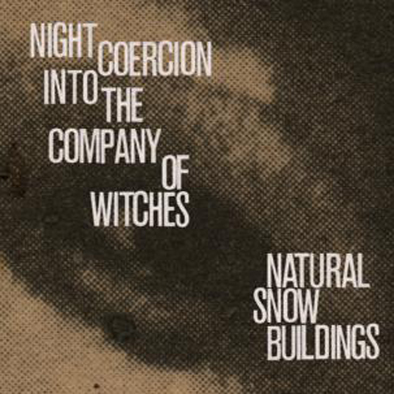 As far as Natural Snow Buildings-related albums go, this sprawling reissue ranks as a pretty monumental and eagerly anticipated event.  Originally released in a crazily limited edition of only 22, this 2008 triple-album is one of the band's most ambitious, yet rarely heard, statements.  Given Mehdi and Solange's tireless evolution over the years, Night Coercion understandably lacks the sophistication and song-craft of their current work, but mostly compensates for those shortcomings with a potent mixture of primal power and sheer massiveness.
As far as Natural Snow Buildings-related albums go, this sprawling reissue ranks as a pretty monumental and eagerly anticipated event.  Originally released in a crazily limited edition of only 22, this 2008 triple-album is one of the band's most ambitious, yet rarely heard, statements.  Given Mehdi and Solange's tireless evolution over the years, Night Coercion understandably lacks the sophistication and song-craft of their current work, but mostly compensates for those shortcomings with a potent mixture of primal power and sheer massiveness.
Looking back on Natural Snow Buildings' early career is pretty fascinating, as they released several epic, ambitious, and significantly different albums in a relatively short span for essentially no audience, all of which have since become much sought-after classics.  Night Coercion followed the heavily post-rock-influenced double-album The Winter Ray (2004) and the more "eerie folk" double-album The Dance of the Moon and the Sun (2006) and managed to somehow avoid sounding much like either.  While their dalliance in post-rock turned out to be short-lived, the rest of NSB's career has essentially been devoted to the blending and perfecting of the aesthetics pioneered on The Dance and this album, which leans quite heavily upon drone and quasi-pagan/medieval themes.  Curiously, however, the impact of those stylistic innovations is dwarfed by the sheer staggering scope of this effort: three hours of music divided into just 6 songs.  To put that in perspective, many fine bands do not record three hours of music over the course of their entire career.
Naturally, an album of such dauntingly epic length faces some inherent perils  The most obvious one is that it is an absolutely exhausting listening experience.  Then, of course, there is the second most obvious one: it is nearly impossible to record that much consistently compelling music at once (even if you are La Monte Young).  Most of these songs are built upon just one or two musical ideas stretched out and embellished for 20 or 30 minutes.  As a result, some stretches of Night Coercion definitely tend to overstay their welcome, like the 7-minute flute outro in "Kadja Bosou" or some of the prolonged bouts of roiling guitar squall that pepper the album.  I suspect Mehdi and Solange were completely aware of that though and were probably pleasantly surprised to find that there were actually 22 people who wanted to hear something so nakedly indulgent and experimental (I imagine asking "hey- do you want to hear my new 3-hour-long witch-themed drone opus?" is an excellent way to find out who your real friends and fans are).
Fortunately, such extreme length also offers great benefits.  For one, some ideas lend themselves beautifully to extended repetition, such as the weird, locked-groove-sounding "parade of the damned" opening to the aforementioned "Kadja Bosou."  Also, the more slow-burning, drone-based pieces tend to build up quite a bit of intensity when allowed such a long time to unfold.  It is also worth noting that one of Night Coercion's finest pieces ("The Great Bull God") is also its longest (by a lot), clocking in at an hour.  In fact, "Bull God" could easily have been the entire album, as it manages to cover all of the album's various stylistic facets over the course of its running time (uneasily discordant droning, ugly guitar noise, slightly off-key flutes, and subtly menacingly tribal/pagan percussion).
Night Coercion is not just notable for its length and stylistic innovations though–it is actually quite raw, scary, and lo-fi by Natural Snow Buildings standards.  Even the somewhat pastoral passages manage to have an uneasy shrillness and slightly wrong-sounding feel to them.  Also, some of the more dissonant pieces (such as "Brooms, Trapdoors, Keyholes") build up to crescendos that are pretty much full-on noise.  Nor are Mehdi and Solange particularly stingy with unleashing dense oceans of feedback.  The album's (lack of) production also plays a crucial role in setting the mood, as the murky "home-made black metal cassette" sound turns the already disturbing "howls of the undead" section of "Gorgons" into something truly nightmarish.
As a listening experience, however, Night Coercion is ultimately only a mixed success–I would describe it as more of an important and ambitious album than a great one (though "pretty good" seems fair).  There is definitely some music that sounds like absolutely no one else and there are a couple of truly memorable complete songs (particularly "Gorgons"), but there is no denying that there is quite a bit of bloat as well.  Also, the album's lengthy stretches of chaos and feedback are not quite as distinctive as the other facets of the duo's sound (even if they are quite visceral).  That said, I still probably would have been floored if I had heard this when it came out, as its weirder, more adventurous aspects necessarily seem perfectly normal to me after hearing all of the superior albums that followed in its wake.  Even now, it is far from a disappointment: I may prefer some of their other work, but this is the only logical choice if I want to block out the world and plunge myself into a black hole of prolonged Natural Snow Buildings immersion (which I will inevitably want to do with some regularity).
 
Read More
- Administrator
- Albums and Singles
 Keith Rowe and Christian Wolff have been playing together since 1968, when Wolff first performed with AMM in the UK. Their history together goes back further, a part of the turbulent musical and political eddies set in motion by the New York School and Cornelius Cardew in the late 1950s and early ‘60s. But this performance, recorded live at NYC’s The Stone as part of Jon Abbey’s AMPLIFY 2011 festival, marks their first recorded appearance as a duo. It’s an inspired pairing. Together they produce quiet, sharp, and surprisingly gorgeous music that exemplifies the still radical ideas they started exploring over 40 years ago.
Keith Rowe and Christian Wolff have been playing together since 1968, when Wolff first performed with AMM in the UK. Their history together goes back further, a part of the turbulent musical and political eddies set in motion by the New York School and Cornelius Cardew in the late 1950s and early ‘60s. But this performance, recorded live at NYC’s The Stone as part of Jon Abbey’s AMPLIFY 2011 festival, marks their first recorded appearance as a duo. It’s an inspired pairing. Together they produce quiet, sharp, and surprisingly gorgeous music that exemplifies the still radical ideas they started exploring over 40 years ago.
The political side of Rowe and Wolff’s music isn’t always apparent, but it’s there, hidden in plain sight. Looking for it can be enlightening, but is unnecessary. The music they make together on ErstLive 010 stands all on its own. It is by turns gossamer thin and concrete, whisper quiet and abrasive, lucid and impenetrable. Keith’s contributions consist of physical noises drawn and scratched into the strings of his table-top guitar, along with live radio broadcasts and the buzz of electrical signals emanating from various electronic devices. Christian's contributions are on the piano and guitar. He hammers on the piano's keys, pulls and mutes the strings, and drums on its body, preferring to play around the piano rather than directly on it—the way pianos are typically played. At the guitar he makes small sounds; plucks a solitary note here, draws a bow across the strings there, and then sits quietly back waiting for the next move.
Both musicians punctuate their performances with these (near) silences. Their pauses break the performance up and keep it from coalescing, which means all the focus is on the discrete cells of sound they produce. Ideas are ventured and tweaked, and then left behind. Seconds pass and only the tiniest sounds are made. Keith sketches out an idea, and Christian climbs over it with the occasional crescendo. It all sounds very deliberate in retrospect, but as it’s happening, anything seems possible. Wolff the composer and Rowe the improviser make the line between their methods difficult to spot.
The quiet and deliberate pace of the music also calls attention to the performance space. September 4th was a hot night at The Stone, but the air conditioning and fans in the room were turned off while Keith and Christian played. With those noises out of the way, I wonder what other sounds were audible in that room. The recording itself, helped by Joe Panzner’s excellent mastering job, is clear and close to the musicians; many of the tiniest sounds they make are audible, but I’ve yet to catch a noise from the audience, or from outside.
And that strikes me as odd, because each time I have listened to ErstLive 010, some environmental sound has crept covertly into the music: the sound of clothes tumbling in the dryer downstairs, wind and rain pressing against the windows outside, the low hum of traffic in the distance. Even with headphones on, I’ve mistaken sounds coming from the neighbors upstairs for something in the mix. Without Rowe and Wolff physically present to contextualize the music, my neighbors and environment unwittingly participate in it, and I think that must have been true at The Stone that night, too.
After I noticed this the first time, the music transformed for me. It bled into the walls and out into the neighborhood. In his April 1998 interview with Perfect Sound Forever, Christian Wolff remarks that he has "a strong anti-rhetorical feeling – I don’t think that music should be manipulative. It should be there and people should be able to do with it what they can and what they want... So there’s that kind of attitude about a musical work. It should just be itself and relatively free from manipulation and calculation to the extent that it’s possible." ErstLive 010 exemplifies this. At the right volume, in the right circumstances, it can hide in book shelves, seep into the wood floors, and camouflage itself in sounds as small as a breath. Rowe and Wolff’s receptiveness to these tiny sounds, maybe even to subconscious and unintended ones, makes this effect possible. And the more open the music is, the deeper and more remarkable I perceive it to be, and the easier it is for me to spy the political and social ideas that have, at times, influenced their writing and performing.
The album ends unexpectedly, to the tune of humming amplifiers. I failed to notice it ending the first time. And the second. And even the third. In fact, I always fail to notice when the album ends unless I pay attention to the track time. Eventually the performance stops, but the sounds continue. They just happen, the way that many environmental sounds seem to. It’s as if Rowe and Wolff are disappearing into the music as they go, using it to get past or away from themselves. By the end, it’s as if they're not there at all.
samples:
 
Read More
- Administrator
- Albums and Singles
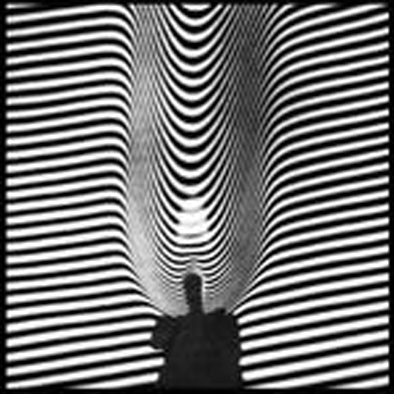 Ged Gengras has been a somewhat ubiquitous and integral figure in the LA music scene for the last several years, contributing his varied talents to artists as disparate as LA Vampires, Pocahaunted, and Sun Araw.  However, I did not know that he had a solo "modular techno" project and had I known, I probably would not have been terribly inclined to seek it out.  Consequently, I was completely blindsided by the massive and wonderful 20-minute opening song on this, his debut full-length.  The other two songs do not quite reach the same heights, but it does not matter much, as "Spontaneous Generation" is almost enough of a must-hear instant classic to carry the whole album.
Ged Gengras has been a somewhat ubiquitous and integral figure in the LA music scene for the last several years, contributing his varied talents to artists as disparate as LA Vampires, Pocahaunted, and Sun Araw.  However, I did not know that he had a solo "modular techno" project and had I known, I probably would not have been terribly inclined to seek it out.  Consequently, I was completely blindsided by the massive and wonderful 20-minute opening song on this, his debut full-length.  The other two songs do not quite reach the same heights, but it does not matter much, as "Spontaneous Generation" is almost enough of a must-hear instant classic to carry the whole album.
On paper, Spontaneous Generation almost seems like a perfect storm of things that make me sigh wearily, combining retro synth fetishism, elitist genre revivalism, and song-less vamping.  However, much like the old cliche "it's the singer, not the song" suggests, the wielder of the modular synthesizers in this case manages to transform seemingly unpromising material into something quite compelling.  At least once, anyway, as the title piece turns a burbling synth bass sequence and a thumping drum machine in a dense, unstoppable juggernaut that sounds like a surly Tangerine Dream trying to level a dance club.  Or perhaps Detroit Techno, Acid,  or Chicago House re-envisioned by an especially hook-savvy noise artist (or preternaturally talented mental patient).  I mean all of that in the best possible way, of course, as minimalism has rarely sounded this muscular, wild, vibrant, and obsessive.  Gengras proves himself to be an absolute wizard at exploiting the infinite possibilities of relentless repetition, endlessly shifting the emphasis of the beat, modulating the bass line, and erupting into noisy and visceral flare-ups.  It is, quite simply, a tour de force.
Unsurprisingly, Ged is not quite able to recapture that magic with the two pieces on the second side of the album, despite adhering to what is essentially the same template (thumping beat + constantly morphing synth hook).  They both offer moments of inspiration though.  "Billions of Christic Atoms" starts quite promisingly with a flurry of wild bleeps, bloops, and squelches, but lacks the urgency and snowballing power of its predecessor.  The closing "Series of Energies," for its part, is endearingly loopy and chaotic, but its comparatively plodding central riff prevents it from building up enough momentum to catch fire.  The problem with working within such rigid self-constraints is that a one-riff vamp that extends for 10 or 20 minutes is going to live or die based upon the strength of that one riff.  Gengras always does a fine job tweaking his content into something vibrant and ingeniously mutating, but "Spontaneous Generation" is the only piece where he conjured up a bass pattern killer enough to hold it all together.
Of course, it is pretty damn impressive that Gengras did manage to find a hook hypnotic enough to ride for 20 gloriously weird and inhuman minutes.  Perhaps he will be able to do it again, perhaps not.  Either way, he has made me a believer in this quixotic project, as I never suspected that something so narrow and self-consciously retro could be so mesmerizing and intense.
Samples:
 
Read More


